9 Most Sustainable Silk Clothing Brands: The Conscious Consumer’s Guide
Affiliate Disclosure
Hey fellow impactful ninja ?
You may have noticed that Impactful Ninja is all about providing helpful information to make a positive impact on the world and society. And that we love to link back to where we found all the information for each of our posts.
Most of these links are informational-based for you to check out their primary sources with one click.
But some of these links are so-called "affiliate links" to products that we recommend.
Why do we add these product links?
First and foremost, because we believe that they add value to you. For example, when we wrote a post about the environmental impact of long showers, we came across an EPA recommendation to use WaterSense showerheads. So we linked to where you can find them. Or, for many of our posts, we also link to our favorite books on that topic so that you can get a much more holistic overview than one single blog post could provide.
And when there is an affiliate program for these products, we sign up for it. For example, as Amazon Associates, we earn from qualifying purchases.
What do these affiliate links mean for you?
First, and most importantly, we still only recommend products that we believe add value for you.
When you buy something through one of our affiliate links, we may earn a small commission - but at no additional costs to you.
And when you buy something through a link that is not an affiliate link, we won’t receive any commission but we’ll still be happy to have helped you.
What do these affiliate links mean for us?
When we find products that we believe add value to you and the seller has an affiliate program, we sign up for it.
When you buy something through one of our affiliate links, we may earn a small commission (at no extra costs to you).
And at this point in time, all money is reinvested in sharing the most helpful content with you. This includes all operating costs for running this site and the content creation itself.
What does this mean for me personally?
You may have noticed by the way Impactful Ninja is operated that money is not the driving factor behind it. It is a passion project of mine and I love to share helpful information with you to make a positive impact on the world and society. However, it's a project in that I invest a lot of time and also quite some money.
Eventually, my dream is to one day turn this passion project into my full-time job and provide even more helpful information. But that's still a long time to go.
Stay impactful,
A cocoon made by a silkworm caterpillar can be unraveled into one continuous silk thread of impressive length. Such thread can be weaved into a fabric with beautiful luster and the properties to keep you warm in the winter and cool in the summer. Yet, modern-day commercial production of this wonderful ancient fabric is tainted with questionable practices. Also, fashion greenwashing makes it harder for you and all other consumers to figure out which silk clothing brands offer the most eco-friendly clothes. So, we had to ask: Which are the most sustainable silk clothing brands?
The most sustainable silk clothing brands include Seek Collective, HERTH, and The R Collective, which employ full traceability, reduce process emissions, and strive for textile circularity. In addition, OZMA and The Ethical Silk Company commit to low-impact materials and ethical practices.
Whether you are searching for an evening dress, an elegant blouse, or a scarf to add to your wardrobe without negatively impacting the soil, the water, the animals, and other people, there is a brand for you. So, let’s keep reading to learn more about the most sustainable silk clothing brands and how they ensure sustainable, ethical practices.
Here’s How Sustainable Silk Generally Are
Silk fabrics are generally not sustainable. Sourcing and processing silk protein fibers are resource-intensive, while silk garment washing and caring have high environmental impacts. It is also important to take note of the cruel end met by most domesticated silkworms whose cocoons are used as raw materials for silk fabrics.
“Sustainable: The ability to be maintained at a certain rate or level | Avoidance of the depletion of natural resources in order to maintain an ecological balance”
Oxford Dictionary
To understand the sustainability of silk, we’ve assessed the life-cycle and each stage’s sustainability. This life-cycle assessment (LCA) is a method to evaluate the environmental impacts of products and materials. Here’s a quick summary of our LCA of silk!
What makes sustainable silk: Upcycling silk is sustainable as the process recirculates the silk material that would otherwise end up in landfills while bypassing the energy-intensive farming step. Similarly, raw silk made with silk waste from spinning is also sustainable.
Additionally: Certified organic silk is also considered eco-friendly because silkworms are fed with organically grown mulberry leaves, eliminating harmful pesticides and fertilizers from farming while ensuring that the silkworms receive humane treatment.
Here’s How We Selected the Most Sustainable Silk Clothing Brands
The brands on this list were chosen based on their commitment and actions to promote sustainable practices while reducing the environmental impacts of the textile industry.
They are transparent about their materials, processes, and workforce management within their supply chain.
Some brands focus their efforts on reducing waste and optimizing natural resources while others strive to reduce the carbon footprint of their clothes.
All of these brands share the commitment to reshape the textile industry toward a more sustainable and Earth-friendly sector.
These Are the 9 Most Sustainable Silk Clothing Brands
Most Sustainable Silk Clothing Brands
Overall, these silk clothing brands are sustainable. Yet, they take various approaches to reduce environmental impacts and uphold ethical standards. Let’s dive into each brand and find out more.
Seek Collective: Luxury Clothing Slowly Made With Care


“We blend art, craft, and design to create items that are luxurious, unique, effortless, and timeless.”
Seek Collective
🌎
How do they ensure their sustainability?
Seek Collective ensures sustainability by striving for a zero-waste process. They have a limited production run to minimize textile waste and reutilize textile scraps to make Zero Waste sleep sets, quilts, napkins, and bandanas, such as these upcycled silk pieces. Very small scraps are turned into the paper used in their Seek notebooks. Furthermore, Seek Collective opts for low-impact natural dyes—coloring substances from roots, bark, flowers, leaves, minerals, and bugs—whenever possible. The dyes they choose for their fabrics are made in a closed-loop system, recycling all water. Beyond dyestuff, Seek Collective uses natural, biodegradable, and recyclable materials for the garments and their packaging. Their collections are made exclusively with natural fabrics, including climate-beneficial wool, (recycled) cotton, and (upcycled) silk. Regarding packaging, the brand strives for responsibly sourced and produced materials. Their hang tags are compostable and made from cotton waste. Furthermore, their labels are made from organic cotton, while all the paper used by the brand is made of recycled paper by US-based eco printers. Their mailers are also biodegradable. Lastly, Seek Collective’s clothes are made using handcraft processes like handloom weaving and hand block printing, reducing process energy usage and lowering the climate impact.
🌐
How do they ensure their ethics?
Seek Collective traces most of their supply chain. Additionally, they provide jobs for workers from disadvantaged communities.
🤝
Are they part of any giving-back programs?
Seek Collective partners with One Tree Planted to plant one tree for every product sold.
🛍️
What is their product range?
- Best for: womenswear, menswear
- Product range: dresses, rompers, tops, bottoms, loungewear, outerwear, plus size, accessories
- Price range: $$$
- Size range: XS–3XL
HERTH: Conscious Luxury Silk Wear With GOTS Certification
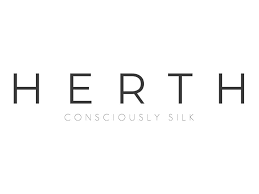
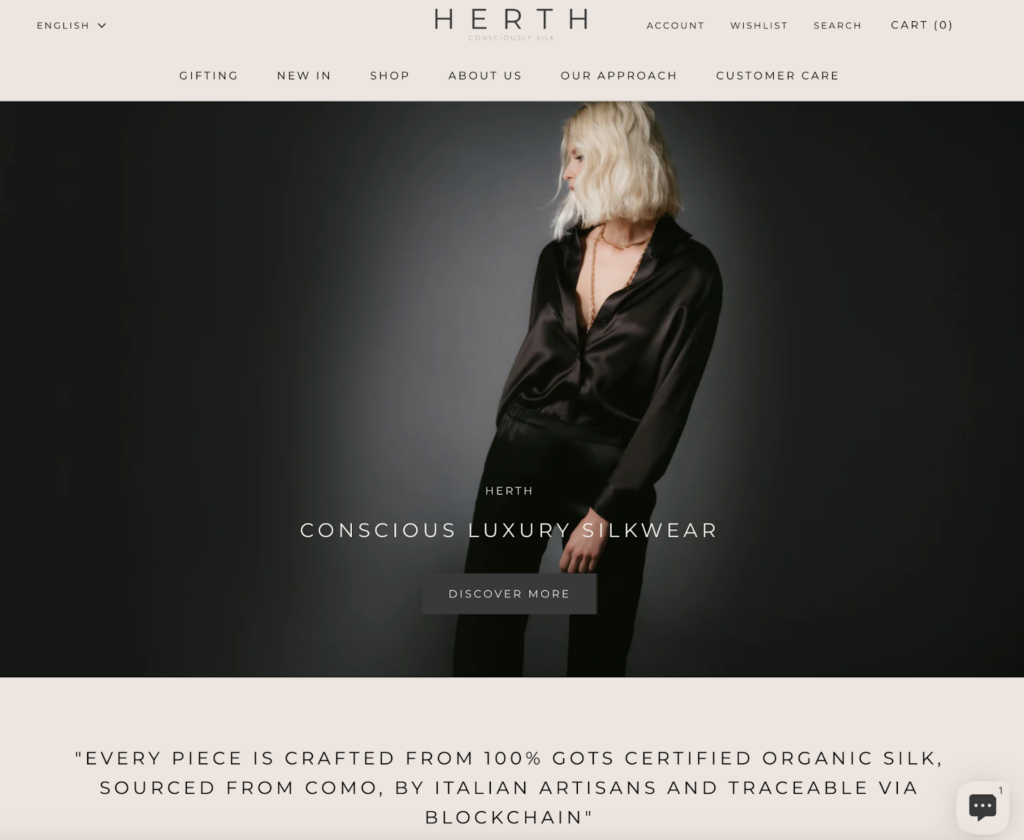
“Sustainability is at the center of everything we do. HERTH, from the design to the final product, from packaging to shipments, aims to be respectful to the environment and people, to inspire conscious buying habits.”
HERTH
🌎
How do they ensure their sustainability?
HERTH promotes sustainability by sourcing eco-friendly materials for their garments and packaging. They source exclusively carbon-neutral mulberry silk certified by the Global Organic Textile Standard (GOTS). The dyeing and printing process subject to the silk are also GOTS-certified, meaning no harmful chemical substances are used during these manufacturing steps. They also use low-impact dyes in all their products. Regarding packaging, HERTH uses made-in-Italy boxes and tissue paper from recycled and responsibly sourced FSC-certified materials. Their cardboard tags are FSC-certified, uncoated, and 100% recycled, while their polyester labels are made with 100% recycled content, certified by the Global Recycle Standard. Their entire supply chain, from material sourcing to garment handcrafting, happens in Italy, with relatively short transportation distances, reducing carbon emissions. Once finished, their products are shipped using carbon-neutral services, meaning that the transport-related carbon emissions are offset through external climate protection projects.
🌐
How do they ensure their ethics?
HERTH ensures their ethics by having their whole supply chain traceable. The blockchain technology in the QR codes found on their labels and tags enables consumers to see a full list of suppliers, their certifications, their silk fabrics, and their production. Every person involved in their production process is assured of fair living wages and comfortable working conditions. Additionally, they use GOTS-certified silk, safeguarding the environment and the animals. The silkworms are fed organic mulberry leaves, grown biodynamically without synthetic agrochemicals. They are allowed to fully develop and continue their life after leaving the cocoon, unlike the cruel practice in conventional silk manufacturing in which the cocoons are boiled to prevent the moths from breaking the silk filament as they emerge.
🤝
Are they part of any giving-back programs?
HERTH partners with 1% for the Planet to donate 1% of their total annual sales to support the planet.
🛍️
What is their product range?
- Best for: womenswear
- Product range: bras, T-shirts, tops, shirts, pants, dresses, bodysuits, underwear, accessories
- Price range: $$$
- Size range: XS–XXL
The R Collective: Women’s Clothing Made With Recused Premium Materials


“We are a social impact business solving fashion’s waste by rescuing, reusing and recycling waste materials into responsible products.”
The R Collective
🌎
How do they ensure their sustainability?
The R Collective prioritizes sustainability by designing their products with circularity in mind, from sourcing pre-consumer textile waste for their collections to engaging the customers for garment longevity. Their circular design principles rest upon creating replicable and scalable solutions to pre-existing, high-frequency waste streams in the fashion industry, meaning that when they can, for example, achieve a zero-waste design in terms of fabric utilization or patterns, they repeat to increase their positive impact. Additionally, they prioritize using single fibers, or the same fiber group, for every part of a product, from the main fabric to the linings, paddings, and threads, to ease future recycling. The fibers The R Collective uses are from high-quality pre-consumer materials they rescue from global luxury fashion houses and quality manufacturers. These reused materials include natural fabrics (cotton, wool, silk), plant-based semi-natural fabrics (l lyocell, modal, viscose, cupro), and polyester. Because their distinctive prints, logos, or patterns mean some rescued garments are unsuitable for reuse, The R Collective innovates to shred them and create new circular yarns bearing their R Mark. These R Mark circular textiles include recycled silk, recycled cotton, and a blend of recycled linen and cotton. Lastly, The R Collective strives for garment longevity, from picking durable fabrics to constructing strong garments to engaging with customers in washing and caring for longevity.
🌐
How do they ensure their ethics?
The R Collective has a Supplier Code of Conduct that covers all ILO’s Fundamental Principles. They trace their whole supply chain and visit their suppliers regularly. They list their manufacturing partners on their website.
🤝
Are they part of any giving-back programs?
The R Collective is not known to be part of any giving-back programs.
🛍️
What is their product range?
- Best for: womenswear
- Product range: dresses, bottoms, coats, jackets, tops, jumpsuits
- Price range: $$$
- Size range: XXS–XXL
OZMA: Timeless Essentials Inspiring Mindful Consumption and Waste Reduction


“OZMA designs with the simplicity we crave in mind; dismissing trend and excess in favor of longevity, ease of wear, and adaptability. In offering a smaller edit we hope to inspire the expansiveness that can come from living with less.”
OZMA
🌎
How do they ensure their sustainability?
OZMA ensures sustainability by sourcing natural and plant-based textile materials to lower their environmental impacts, reducing waste with limited production and recycling incentives, and promoting slow fashion with well-made, versatile, and for-all-season garments. OZMA’s garments are made with low-impact fibers, including raw silk, linen, alpaca, and TENCELTM Lyocell. Specifically, they use raw silk, also known as silk noil, yielded from the silk waste of the spun processes and sourced from a regenerative farm with a Bluesign® certification. Additionally, they source GOTS-certified dyes for their garments. Regarding reducing waste, OZMA produces in limited runs to avoid unnecessary inventory and enables textile recycling via their partnership with thredUP.
🌐
How do they ensure their ethics?
OZMA’s clothes are produced in LA- and Peru-based small, family-run factories that are vetted to ensure fair payment, respectful treatment, and safe working conditions for the people who make the clothes. Regarding animals involved, they source their alpaca fibers with Promperu Fair Trade certification, guaranteeing the humane treatment of the animals.
🤝
Are they part of any giving-back programs?
OZMA gives back 100% of profits from their exclusive OZMA Sisterhood Bandana to causes supporting equality, human rights, wellness, and education. They also donate 1% of their overall profit to organizations their team chose.
🛍️
What is their product range?
- Best for: womenswear
- Product range: tops, T-shirts, bottoms, dresses, jumpsuits, sweaters, jackets, accessories
- Price range: $$
- Size range: XS–XL
The Ethical Silk Company: Silk Clothing and Bedding Made Ethically and Eco-Consciously


“Embracing this natural fabric (silk), our products combine a love for quality goods and sustainable practices as luxury and practicality are celebrated and embodied.”
The Ethical Silk Company
🌎
How do they ensure their sustainability?
The Ethical Silk Company ensures sustainability by minimizing waste, using low-impact dyes, and recycling process water. They avoid large inventory and associated waste by keeping the production runs short and only repeating the runs when demand dictates. Old stock is repurposed into smaller items, so each piece of silk is carefully utilized. Patterns are placed on fabrics carefully to keep wastage minimal during production. During the dyeing step of manufacturing, the brand focuses on lowering the environmental impact by eliminating high-impact AZO dyes. Additionally, all water used is treated with a water filtration system to remove the dye residue and is recycled for fabric washing. Their manufacturing partner also has a rainwater catchment system to use in fabric processing. When the season allows (meaning there is no monsoon), their silk can be block printed by hand and left to dry naturally outside, saving process energy and lowering carbon emissions. Lastly, The Ethical Silk Company sources responsible packaging for their silk products, including compostable, corn-based clear bags from Ecoland, recycled and recyclable mailers from Lil Packing, and tissue paper wrapping.
🌐
How do they ensure their ethics?
The Ethical Silk Company works with a Fair Trade tailoring unit to make their products, ensuring fair labor standards, including but not limited to clean and safe working conditions, payment of a living wage, no child labor, and no discrimination. Regarding animal welfare, The Ethical Silk Company exclusively sources mulberry silk extracted from a cocoon after the moth has left it, as opposed to the cruel practice in conventional silk manufacturing in which the cocoons are boiled to prevent the moths from breaking the silk filament as they emerge.
🤝
Are they part of any giving-back programs?
Since their inception, The Ethical Silk Company has committed to donate 10% of their profits to charitable causes. Currently, the charities of choice are Jeevan Jyothi AIDS Centre in Theni, India, which works to support those living with HIV and AIDS, and Focus Ireland, a charity preventing people from becoming, remaining, or returning to homelessness.
🛍️
What is their product range?
- Best for: kidswear, menswear, womenswear
- Product range: sleepwear, loungewear, tops, pants, slips, pajamas, robes
- Price range: $$$
- Size range: XS–XL
Indiebride: Wedding Dresses Made Ethically and Sustainably


“Our bohemian and romantic wedding dresses have a beautiful story, and they are ethically handmade in London using sustainable materials.”
Indiebride
🌎
How do they ensure their sustainability?
Indiebride promotes sustainability by minimizing textile waste, sourcing low-impact materials, and handcrafting wedding dresses locally to reduce carbon footprint. Their gowns are made to order, avoiding unnecessary inventory waste. Once any wedding dress is made, the cutoffs are reused to embellish their sashes, donated for educational projects, or repurposed as insulation, sports equipment filler, and carpet underlay by a professional facility. Regarding materials for their wedding dresses, Indiebride mainly uses fibers derived or regenerated from natural materials, including silk organically produced by a small UK manufacturer, organic bamboo certified by EcoCert, OEKO-TEX® Standard 100 Class 1 and OCIA, and TENCELTM Lyocell. Lastly, each gown from Indiebride is handcrafted and, when needed, altered locally in their London studio, avoiding unnecessary transport and the associated carbon emissions.
🌐
How do they ensure their ethics?
Indiebride is transparent about each and every one of their wedding dresses, disclosing who made the gown, what the fabrics and laces were made of, and even where the material for making those laces and fabrics came from. Regarding animal welfare, Indiebride sources Ahimsa silk extracted from cocoons after the moth has left it, as opposed to the cruel practice in conventional silk manufacturing in which the cocoons are boiled to prevent the moths from breaking the silk filament as they emerge.
🤝
Are they part of any giving-back programs?
Indiebride is not known to be part of any giving-back programs.
🛍️
What is their product range?
- Best for: womenswear
- Product range: wedding dresses
- Price range: $$$$
- Size range: customized
LANIUS: Premium-Quality Womenswear Advocating for Slow Fashion

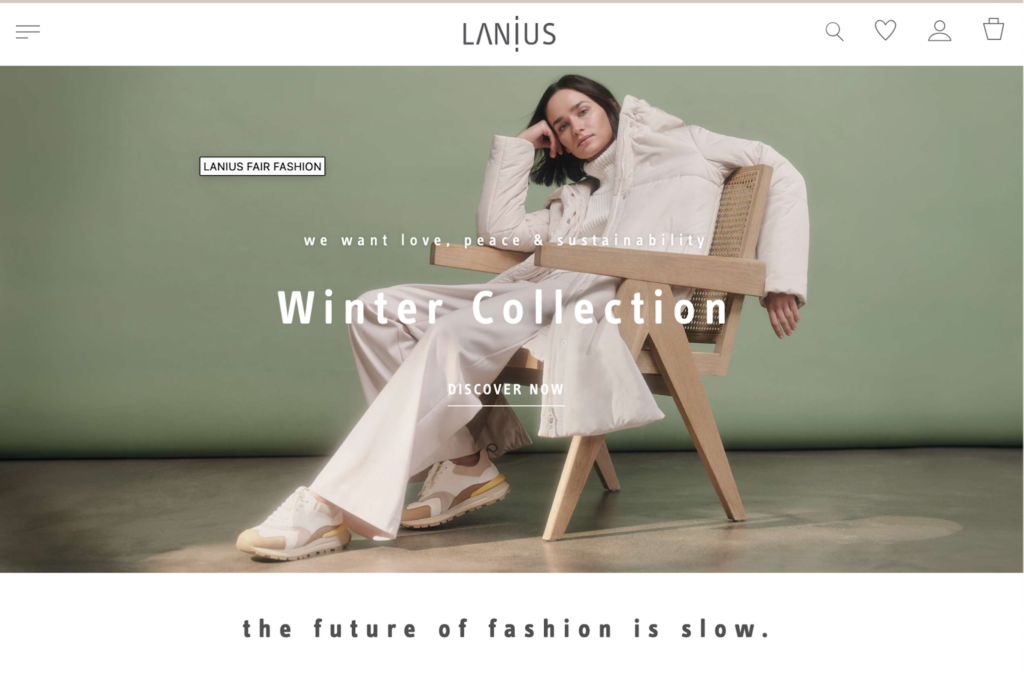
“For our textiles we use a whole variety of renewable raw materials, free of pesticides, herbicides and other poisons. ”
LANIUS
🌎
How do they ensure their sustainability?
LANIUS prioritizes sustainability by opting for a high proportion of eco-friendly materials, lowering the carbon footprint, and reducing waste by reusing some of their offcuts. They mainly use organic materials from controlled organic cultivation or from controlled organic animal husbandry, including GOTS-and OCS-certified organic cotton, hemp, linen, mulesing-free wool, and silk. Specifically, their silk scarves are made with upcycled silk, lowering the environmental impacts. Further down the life-cycle in the manufacturing stage, LANIUS uses low impact non-toxic dyes in most of their products while avoiding chemical high-grade finishing, such as anti-moth finishes, chlorine bleach or biocide finishes, resin, nickel, and Teflon. Regarding their carbon footprint, the brand implements various reduction measures like shortening the value chains to avoid unnecessary transport routes, using renewable energy in their supply chain, and shipping products in recycled cardboard boxes that are often reused several times. The unavoidable emissions are offset in reforestation and renewable energy projects in Asia. Lastly, as their dedication to slow fashion, LANIUS strives to extend the life of the clothes you and other consumers already own with their Care – Repair – Resell – Rent platform.
🌐
How do they ensure their ethics?
LANIUS traces most of their supply chain and discloses factories where their various finished products are manufactured. Their production partners have sustainability certificates such as the GOTS certificate, the BSCI Code of Conduct, and the SA8000 standard and are audited by the Fair Wear Foundation. Additionally, LANIUS regularly visits their partners.
🤝
Are they part of any giving-back programs?
LANIUS is not known to be part of any giving-back programs.
🛍️
What is their product range?
- Best for: womenswear
- Product range: shirts, denim, sweaters, pants, hoodies, tops, blouses, T-shirts
- Price range: $$
- Size range: S–XL
Amour Vert: Stylish and Environmentally Friendly Clothing Made in the US
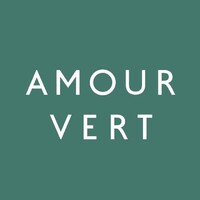

“Our sustainable practices address all aspects of our business operations and the full lifecycle of the garment: the fibers and production processes used, how workers are treated, how it gets to the consumer, and finally—whether it can be recycled or is forced into a landfill.”
Amount Vert
🌎
How do they ensure their sustainability?
Amour Vert ensures sustainability by using traceable, eco-friendly materials and promoting circular fashion. They use a medium proportion of lower-impact fibers, including organic cotton, linen, and lyocell, modal, and viscose made by Lenzing. Additionally, they opt for recycled varieties of higher-impact fabrics, such as polyester and cashmere, to reduce their carbon footprint. The silk used in Amount Vert’s collection is Bluesign® certified. Regarding circular fashion initiatives, Amour Vert uses deadstock fabric and sells pre-loved clothing through their resale marketplace, ReAmour.
🌐
How do they ensure their ethics?
Amour Vert traces part of their supply chain, including suppliers in the final stage of production, which happens in the US.
🤝
Are they part of any giving-back programs?
Amour Vert partners with American Forests® to plant trees in North America: with every purchase of a tee, they plant a tree.
🛍️
What is their product range?
- Best for: womenswear
- Product range: shirts, denim, sweaters, dresses, pants, tops, blouses, T-shirts
- Price range: $$
- Size range: XS–XXL
Eileen Fisher: Secondhand Silk Clothes From a Sustainable Fashion Brand
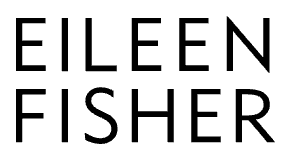
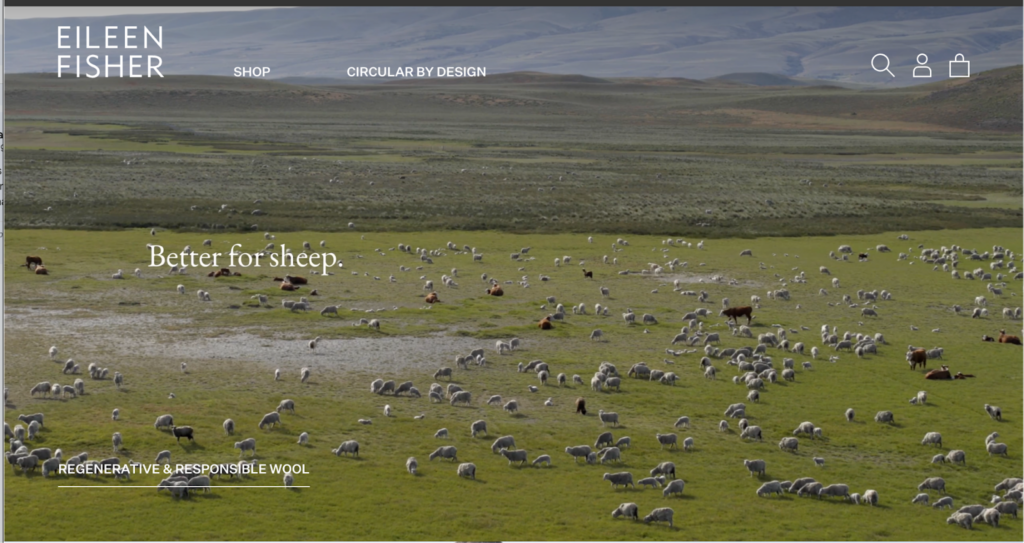
“The Biggest Thing We Can Do Is Reduce”
Eileen Fisher, founder of Eileen Fisher
🌎
How do they ensure their sustainability?
Eileen Fisher’s sustainability efforts focus on using eco-friendly materials, including recycled cotton, organic cotton, organic linen, and hemp, reducing greenhouse gas emissions generated from their operations and supply chain, reducing fabric and corporate waste, and recycling the brand’s used clothes back into new products. Their commitments to sustainable materials, circular systems, and environmentally friendly practices are demonstrated in initiatives like VISION 2020, Horizon 2030, and Renew. Specifically, you will be able to find many pre-loved silk clothes via their take-back and resale program “Eileen Fisher Renew”. They are also certified as a B Corporation and a Bluesign® brand.
🌐
How do they ensure their ethics?
Eileen Fisher is committed to ethical practices. They have worker empowerment initiatives such as collective bargaining and the right to make a complaint. For example, their “Our Love, Peru” project supports over 450 families in and around Arequipa with higher fair trade wages and investments in the local community. Additionally, Their VISION 2020, set in 2015, tackled unethical labor practices. They also have a formal animal welfare policy aligned with Five Freedoms. Additionally, Eileen Fisher follows the Responsible Wool Standard and the Responsible Down Standard, which ensures the humane treatment of animals used for textile products.
🤝
Are they part of any giving-back programs?
Eileen Fisher supports many women-owned businesses. The brand has provided, since their inception, many grants for women, including the current program Supporting Women in Environmental Justice.
🛍️
What is their product range?
- Best for: elegant, classic, and casual women’s clothes
- Product range: dresses, blouses, sweaters, cardigans, pants, skirts and outerwear, shoes, accessories
- Price range: $$$
- Size range: XXS–3XL
Silk Fabrics: Durable, Breathable, And Biodegradable Materials
Silk fabrics are breathable, durable, and biodegradable materials that can keep you cool in the summer and warm in the winter.
Here are the life-cycle stages of silk fabrics and each stage’s sustainability assessment:
- Sourcing plant- and animal-derived materials for making silk fabrics: Sourcing raw materials for silk fabrics is not sustainable. The raw materials for most commercial silk fabrics come from the cocoons that silkworm caterpillars produce to wrap around themselves during their transformation into silkworm moths. The main food for these larvae is the leaves of mulberry trees, which often require significant land and water to grow. Heavy overuse of synthetic fertilizers and pesticides is common in mulberry cultivation, even though the species generally don’t need such agrochemicals. Alternatively, using silk waste to make recycled and upcycled silk fabrics is sustainable as it bypasses the resource-intensive farming step.
- Manufacturing of silk fabrics: Large-scale commercial silk manufacturing is energy and water-intensive, making silk processing unsustainable. The process starts with collecting silk protein fibers from the cocoons produced by the caterpillars of the silkworm moth species. Then, the yarns go through various mechanical and chemical processes, including degumming, weighting, dyeing, and weaving. Alternatively, manufacturing silk clothes from raw silk and upcycled silk is sustainable as it bypasses the water and energy-intensive manufacturing step.
- Transportation of silk fabrics: Transporting can be a carbon-intensive life-cycle stage for clothing items made with silk fabrics due to the distances covered and emissions associated with transporting vehicles. Virgin silk fabrics typically travel from silkworm-rearing facilities or forests, where the cocoons are collected, to processing and finishing factories, sorting centers, shops, and consumers’ homes before going to recycling centers or landfills.
- Usage of silk fabrics: The usage of silk is generally not sustainable. Many silk fabrics require dry cleaning using harmful solvents. Silk clothes are also prone to wrinkles, resulting in high energy demand for steam pressing. However, silk is a strong natural fiber that can make long-lasting clothes.
- End-of-life of silk fabrics: The end-of-life stage for silk is generally sustainable because untreated silk is fully biodegradable and compostable.
Silk fabrics made in large-scale commercial settings are generally considered neither sustainable nor ethical. Mulberry cultivation for rearing silkworm moths is resource-intensive, using a lot of land, freshwater, and energy. Many farmers also use pesticides and fertilizers unnecessarily. Also, the silk industry is tainted with the ethical problems of the many silkworm moths being killed for the finest variety of these fabrics. However, there are sustainable silk varieties, including recycled silk (raw silk), upcycled silk, and certified organic silk.
Why Is It Important to Buy Products Made of More Sustainable Fabrics
It is important to buy products made from more sustainable fabrics because a sustainable textile industry has a lower carbon footprint, helps save natural resources, and is better for forests, animals, and humans alike.
Buying Sustainable Fabrics Reduces Your Carbon Footprint
The production of clothing and footwear is estimated to contribute 10% of global greenhouse gas emissions—more than all international flights and shipping combined. If the fashion industry were a country, it would be the fourth largest emitter of carbon dioxide.
One way to reduce the carbon footprint of the clothes you buy is to opt for sustainable fabrics. Sustainable fabrics, which are often made with natural or recycled fibers, have relatively low carbon footprints compared to petroleum-based fabrics. For example, organic cotton made in the US has a carbon footprint of 2.35 kg CO2 (per ton of spun fiber)—a quarter of polyester’s carbon footprint.
Buying Sustainable Fabrics Reduces Demand for Natural Resources and Waste Management
The textile industry uses water and land to grow cotton and other fibers. It is estimated that 79 billion cubic meters of water were used for the sector worldwide in 2015. For example, producing a single cotton T-shirt requires as much water as one person drinks for 2.5 years (2,700 liters of fresh water).
Worse yet, the textile economy is vastly more linear than circular: the largest amount of resources used in clothes ended up in landfills (instead of being recycled to remake clothes). According to a report by the Ellen MacArthur Foundation,
- Less than 3% of materials used in the textile economy in 2015 came from recycled sources.
- In other words, more than 97% of resources used in making clothes are newly extracted.
When clothing items are disposed of within a short period of time—under a year in the case of half of the fast fashion clothes—the natural systems that provide raw materials for fabrics don’t have enough time to recover and regenerate, which could lead to ecological breakdown.
Sustainable fabrics are made with less water and emissions while lasting longer:
- Because they are durable, you don’t need to buy new clothes too often.
- Thus, you help reduce the pressure to extract more resources for making new items.
Similarly, making and consuming sustainable fabrics made with recycled materials reduces the demand for virgin materials while helping tackle waste management.
Buying Sustainable Fabrics Encourages Sustainable Management of Forests
Sustainable plant-based fabrics are made with raw materials from forests and plantations that are sustainably managed, such as complying with FSC standards.
When you buy sustainable plant-based fabrics, you discourage unsustainable forestry practices like illegal logging. You can help reduce deforestation, biodiversity loss, and the effects of climate change.
Buying Sustainable Fabrics Encourages Fairer Treatment of Animals
The fashion industry is rife with animal mistreatment when it comes to making animal-based fabrics like wool or silk. Every year, billions of animals suffer and die for clothing and accessories.
Buying sustainable vegan alternatives can help to reduce the pressure on raising more and more animals to meet the demand for animal-based fabrics while sacrificing their well-being and lives.
Suppose you have to buy fabrics made with, for example, wool or silk; make sure you only choose brands committed to cruelty-free products. In that case, you help advocate better treatments for animals raised within the textile industry.
Using Sustainable Fabrics Encourages Fairer Treatment of Textile Workers
Recent statistics from UNICEF estimated as many as 170 million child laborers worldwide, many of whom were engaged in some form of work in the textile industry. They don’t get paid minimum wages and often work long hours.
When you buy sustainable fabrics from brands transparent about the working conditions at their factories, you discourage the use of child labor and help promote better working conditions for textile workers.
How Can You Generally Buy More Sustainable Fabrics
The key to sustainably buying fabrics is to check on relevant environmental and original certifications.
For natural fabrics:
- Global Organic Textile Standard (GOTS): A globally recognized certification system that ensures a certain threshold of organic content has been met. It covers manufacturing, packaging, labeling, transportation, and distribution (but not what happens in the fields where crops are grown).
- USDA Certified Biobased Product: The USDA BioPreferred® Certification is a voluntary certification offered by the United States Department of Agriculture. The certification identifies products made from plants or other renewable materials.
- Ecolabel: Ecolabel is the official European Union voluntary label recognized worldwide for certified products with a guaranteed, independently verified low environmental impact. The label requires high environmental standards throughout the entire life-cycle: from raw material extraction through production and distribution to disposal. It also encourages companies to develop innovative, durable, easy-to-repair, and recyclable products.
For plant-based semi-natural/semi-synthetic fabrics:
- Forest Stewardship Council: An FSC certification ensures that the wood (or wood-like material) comes from responsibly managed forests that provide environmental, social, and economic benefits.
There are two types of FSC Certification:- FSC Forest Management Certification, with a focus on the origin of the wood—the forest.
- FSC Chain of Custody Certification, which focuses on the path from the forest to the customer’s home.
- Program for Endorsement of Forest Certification: PEFC’s approaches to sustainable forest management are in line with protecting the forests globally and locally and making the certificate work for everyone. Getting a PEFC certification is strict enough to ensure the sustainable management of a forest is socially just, ecologically sound, and economically viable but attainable not only by big but small forest owners.
For recycled fabrics:
- Recycled Claim Standard (RCS): The Textile Exchange RCS was originally developed as an international, voluntary standard that sets requirements for third-party certification of Recycled input and chain of custody.
- The Global Recycled Standard (GRS): The Global Recycled Standard (GRS) is an international, voluntary, full product standard that sets requirements for third-party certification of Recycled Content, chain of custody, social and environmental practices, and chemical restrictions. It can be used for any product with more than 20% recycled material.
For all types of fabrics:
- STeP by OEKO-TEX®: STeP by OEKO-TEX® is an independent certification system for brands, retailers, and manufacturers from the textile and leather industry. It communicates organizational environmental measures, including reducing carbon footprint and water usage.
- OEKO-TEX® Standard 100: OEKO-TEX® labels aim to ensure that products pose no risk to human health (i.e. containing banned chemicals).
Some certifications that are signaling brands’ efforts toward lowered environmental impacts and a circular economy are:
- B Corp Certification: The label B Corp is a certification reserved for for-profit companies. Certified holders are assessed on their social and environmental impacts.
- Cradle2Cradle certification: Cradle2Cradle provides a standardized approach to material circularity. It assesses whether products have been suitably designed and made with the circular economy in mind covering five critical categories: material health, material reuse, renewable energy and carbon management, water stewardship, and social fairness.
Final Thoughts
Though large-scale commercial silk fabrics are generally neither sustainable nor ethical, it is possible to buy silk clothes that don’t harm the environment and animals.
By purchasing new or pre-loved silk clothes made organically or with recycled material from brands that commit to sustainability, you support their mission to create a fairer and less harmful textile industry for all lives on Earth.
Here is the list (again) of the most sustainable silk clothing brands:
- Seek Collective
- HERTH
- The R Collective
- OZMA
- The Ethical Silk Company
- Indiebrie
- LANIUS
- Amour Vert
- Eileen Fisher
To make your use of these fabrics even more sustainable, follow these steps:
- Buy second-hand, recycled, or upcycled clothes made with silk clothes.
- While using silk clothes, maximize the number of wears between washes and keep them as long as possible.
- At the end-of-life of your silk clothes, upcycle the materials to extend their usage and arrange for them to be recycled or properly disposed of.
Stay impactful,

Sources
- Impactful Ninja: How Sustainable Are Silk Fabrics? A Life-Cycle Assessment
- Britannica: Silk | Fiber
- Science Direct: Life-cycle assessment (LCA)
- Seek Collective: Home
- HERTH: Home
- The R Collective: Home
- OZMA: Home
- The Ethical Silk Company: Home
- Indiebride: Home
- LANIUS: Home
- Amour Vert: Home
- Eileen Fisher: Home
- Good On You: Brand Directory | Seek Collective
- Seek Collective: Zero Waste
- Seek Collective: Sleep Set, Golden Eye
- Seek Collective: Process
- Seek Collective: Natural Dyes
- Impactful Ninja: How Sustainable Are Natural Fabrics Fabrics? A Life-Cycle Analysis
- Seek Collective: Climate Beneficial Wool
- Impactful Ninja: How Sustainable Are Cotton Fabrics? A Life-Cycle Analysis
- Seek Collective: Packaging
- Impactful Ninja: How Sustainable Are Organic Cotton Fabrics? A Life-Cycle Analysis
- Seek Collective: Handloom weaving
- Seek Collective: Hand block printing
- One Tree Planted: Home
- Seek Collective: One Garment Sold = One Tree Planted
- HERTH: OUR GOTS CERTIFIED ORGANIC SILK AND THE NATURAL BENEFITS OF WEARING SILK
- Global Organic Textile Standard: Home
- Good On You: Brand Directory | HERTH
- HERTH: SUSTAINABILITY
- Textile Exchange: The RCS and GRS are designed to boost the use of recycled materials.
- HERTH: HOW WE USE BLOCKCHAIN TO TRACE THE SUPPLY CHAIN
- HERTH: CONTEMPORARY ITALIAN CRAFTSMANSHIP AND MADE IN ITALY
- One Percent For The Planet: Home
- The R Collective: Responsibility | Design
- The R Collective: Responsibility | Materials
- The R Collective: Material Range
- Impactful Ninja: How Sustainable Are Wool Fabrics? A Life-Cycle Analysis
- Impactful Ninja: How Sustainable Are Semi-Natural/ Semi-Synthetic Fabrics Fabrics? A Life-Cycle Analysis
- Impactful Ninja: How Sustainable Are Lyocell Fabrics? A Life-Cycle Analysis
- Impactful Ninja: How Sustainable Are Modal Fabrics? A Life-Cycle Analysis
- Impactful Ninja: How Sustainable Are Viscose Fabrics? A Life-Cycle Analysis
- Impactful Ninja: How Sustainable Are Cupro Fabrics? A Life-Cycle Analysis
- Impactful Ninja: How Sustainable Are Polyester Fabrics? A Life-Cycle Analysis
- The R Collective: R Circular Textiles
- Impactful Ninja: How Sustainable Are Recycled Cotton Fabrics? A Life-Cycle Analysis
- Impactful Ninja: How Sustainable Are Linen Fabrics? A Life-Cycle Analysis
- The R Collective: Wear and Care
- The R Collective: Code of Conduct
- Good On You: Brand Directory | The R Collective
- International Labour Organisation: Home
- International Labour Organisation: ILO Declaration on Fundamental Principles and Rights At Work
- The R Collective: R Manufacturers
- OZMA: Textile Guide and Care Instructions
- OZMA: Our Philosophy
- Impactful Ninja: How Sustainable Are Alpaca Fabrics? A Life-Cycle Analysis
- Tencel: TENCELTM Lyocell
- OZMA: REGEN SILK + REGENERATIVE AGRICULTURE
- Bluesign: Home
- OZMA: THREDUP X OZMA
- thredUP: Home
- GLAMOUR: 31 Sustainable Fashion Brands You Can Shop Confidently
- PERU FAIR TRADE: CERTIFIED FAIR TRADE COMPANIES
- OZMA: The OZMA Sisterhood Bandana
- Good On You: Brand Directory | The Ethical Silk Company
- The Ethical Silk Company: OUR STORY
- The Ethical Silk Company: Shipping & Returns
- Lil Packing: Home
- Mehra Shaw: Fair Trade Standards
- Focus Ireland: Home
- Indiebride: Sustainability
- Indiebride: Our materials
- Impactful Ninja: How Sustainable Are Bamboo Fabrics? A Life-Cycle Analysis
- EcoCert: Home
- OEKO-TEX: Standard 100 by OEKO-TEX®
- OCIA: Home
- Impactful Ninja: How Sustainable Are TENCEL Fabrics? A Life-Cycle Analysis
- Good On You: Brand Directory | LANIUS
- LANIUS: Our Standards | Sustainability at every level
- LANIUS: Cotton
- LANIUS: Hemp
- LANIUS: Linen
- LANIUS: Merino wool
- LANIUS: TENCELTM
- LANIUS: LENZINGTM ECOVERO™
- LANIUS: CO₂ Compensation
- Climate Partner: 7017
- LANIUS: Care – Repair – Resell – Rent
- LANIUS: Fair Production
- AMFORI: BSCI
- Good On You: Brand Directory | Amount Vert
- Lenzing: Home
- Amount Vert: Our Signature Fabrics
- Amount Vert: ReAmour
- American Forests® : Home
- Amount Vert: Buy a tee, plant a tree
- Impactful Ninja: How Sustainable Are Cashmere Fabrics? A Life-Cycle Analysis
- Impactful Ninja: How Sustainable Are Hemp Fabrics? A Life-Cycle Analysis
- Eileen Fisher RENEW: Home
- Eileen Fisher RENEW: Silk
- Eileen Fisher: OUR VISION2020 RESULTS
- Eileen Fisher: Our Brand
- B Corporation: Eileen Fisher
- Good On You: Brand Directory | Eileen Fisher
- Eileen Fisher: Community | Love, Peru. Our Fair Trade Project.
- CFDA: HOW EILEEN FISHER IS THE ULTIMATE SUSTAINABLE LABEL
- Seek Capital: 11 Small Business Grants For Women
- European Parliament: The impact of textile production and waste on the environment (infographic)
- Science Direct: The challenge of “Depeche Mode” in the fashion industry – Does the industry have the capacity to become sustainable through circular economic principles, a scoping review
- Science Direct: Carbon Footprint of Textile and Clothing Products
- European Parliament: Environmental impact of the textile and clothing industry
- European Parliament: What if fashion were good for the planet?
- Ellen MacArthur Foundation: A New Textiles Economy: Redesigning fashion’s future
- McKinsey: Style that’s sustainable: A new fast-fashion formula
- Forest Stewardship Council: Home
- Our World in Data: Deforestation and Forest Loss
- Our World in Data: Renewable Energy
- Peta: Animals Used For Clothing
- The Guardian: Child labour in the fashion supply chain
- BioPreferred: WHAT IS THE BIOPREFERRED PROGRAM?
- European Commission: Environment | EU Ecolabel
- Forest Stewardship Council
- FSC Forest Management Certification
- FSC Chain of Custody Certification
- Program for Endorsement of Forest Certification
- OEKO-TEX: Certification according to STeP by OEKO-TEX®
- B Corp Certification: Home
- C2CCertified: Home




